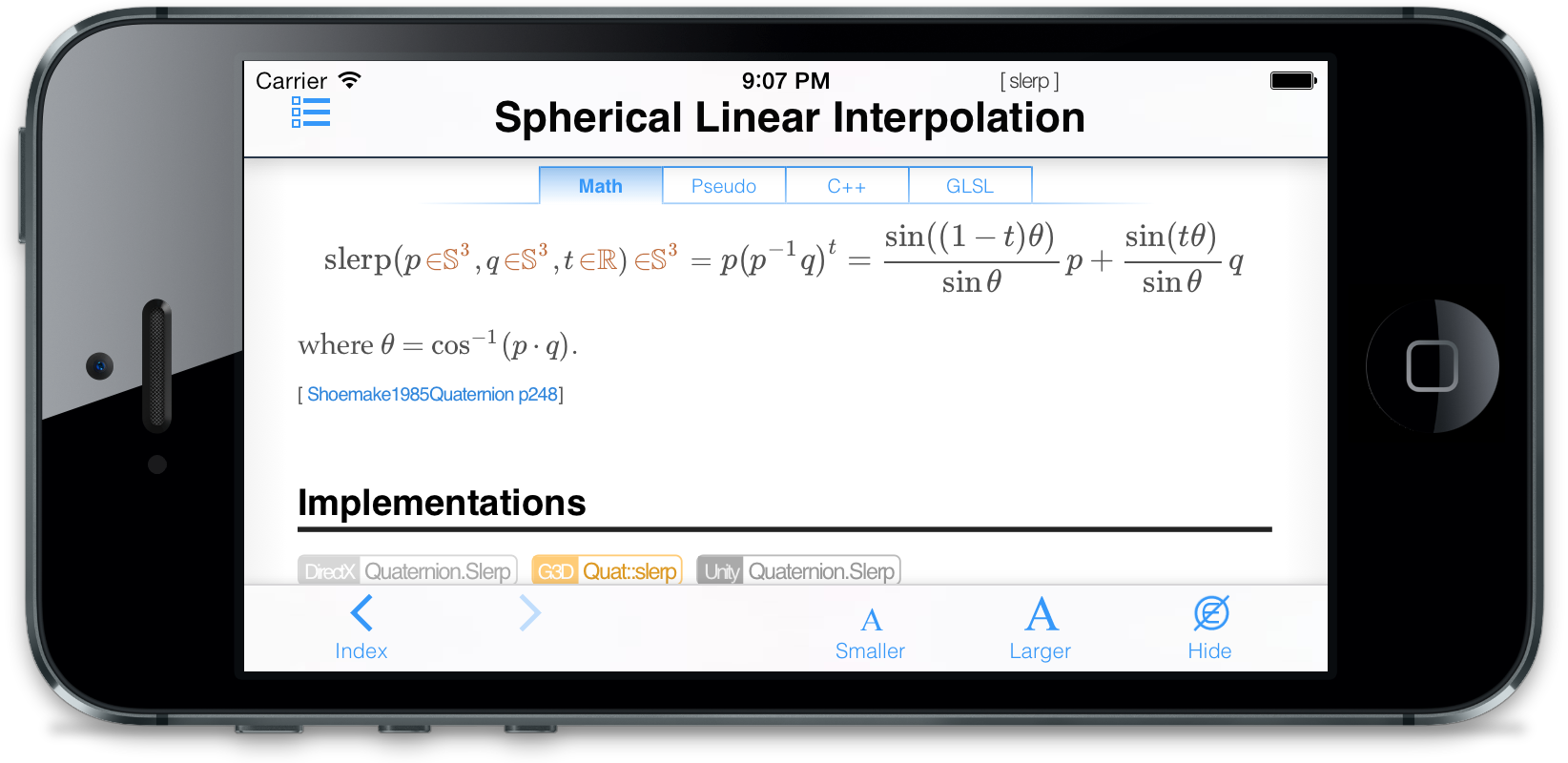
|
“
Both readable and solid, the Graphics Codex provides
the reader with the essence of 3D computer rendering.”
—Eric Haines, Autodesk
“
I own and use the Graphics Codex. Is it a reference
tool, a companion to a textbook, an alternative to a
textbook, or a self-study guide? It can work in any of
these roles, but I think it is in fact a new thing. It's
a thing we'll be seeing a lot of...dollar for dollar [before it was free!],
it's the best scholarly information I have ever
purchased.”
—Peter Shirley, University of Utah The Graphics Codex by Morgan McGuire at Casual Effects contains:
Download free PDFs of three sample topics: Chapter 4: A Model of Light, Topic: Ray-Triangle Intersection, and Topic: Fresnel Coefficient. For teachers, a sample syllabus shows how to use the Graphics Codex beside or instead of a conventional textbook. Topics in the app include: Ray tracing, shallow water equations (2D Navier-Stokes), shadow map shaders, the Rendering Equation, area of a sphere, Fresnel equations, popular BSDFs, CSS selectors, configuring simple web servers, HTML entities, transformation matrices, quaternion operations, ray intersections, a chart of common resolutions, the EM spectrum, and human photoreceptor frequency response. Purchase the app once. It will adapt to the native resolution of every device that you use it on. New content and app features will automatically arrive every month as free updates.
The Graphics Codex is written by an expert,
always with you, and always up to date. E-mail
suggestions and report problems directly to me (Morgan)
at |
||
|
|
||

|
||
|
|
||
Bibtex Entry:
@book{McGuire2024GraphicsCodex,
title = {The Graphics Codex},
author = {Morgan McGuire},
year = {2024},
edition = {2.17},
publisher = {Casual Effects},
url = {https://graphicscodex.com}
}
|
||
|
|
||